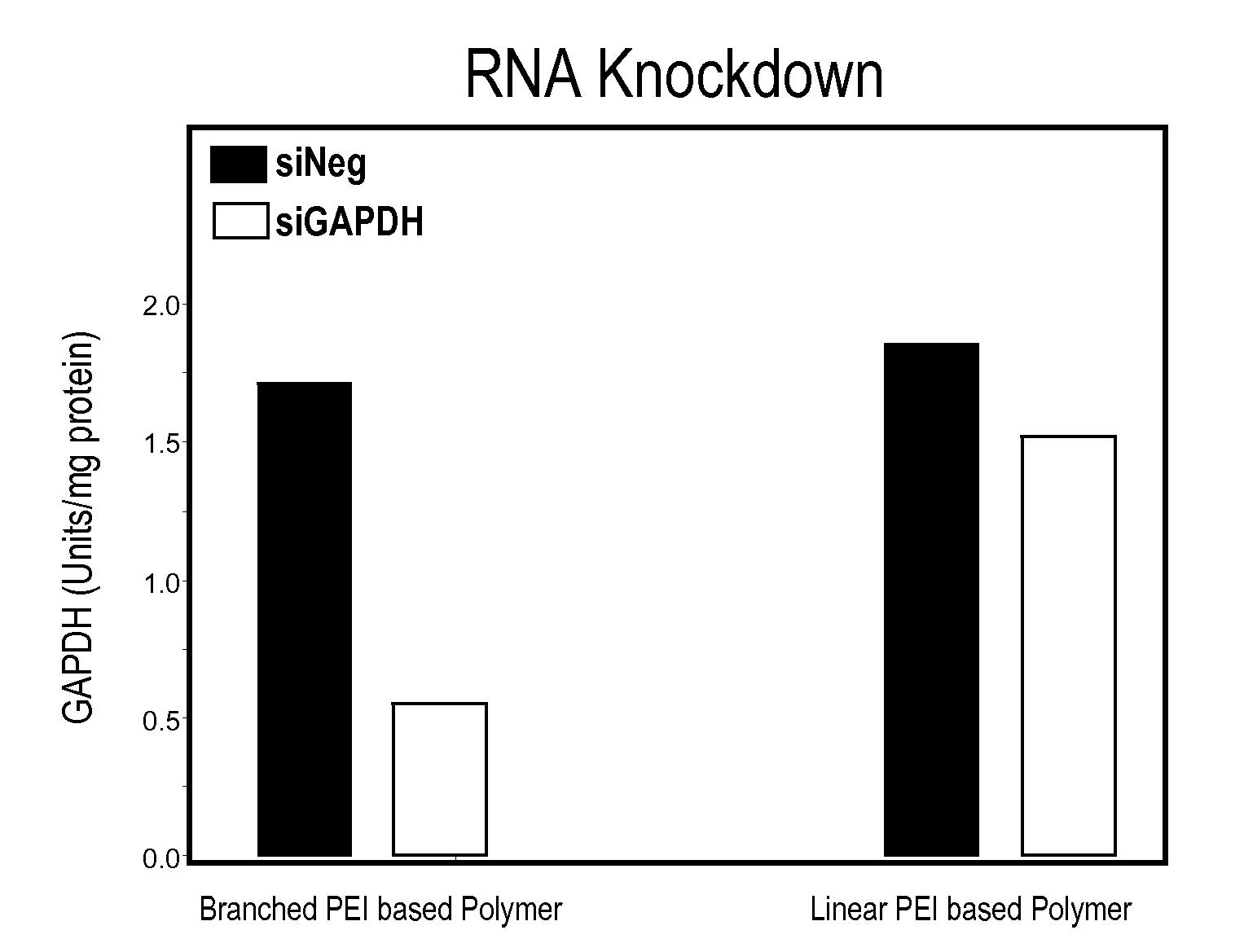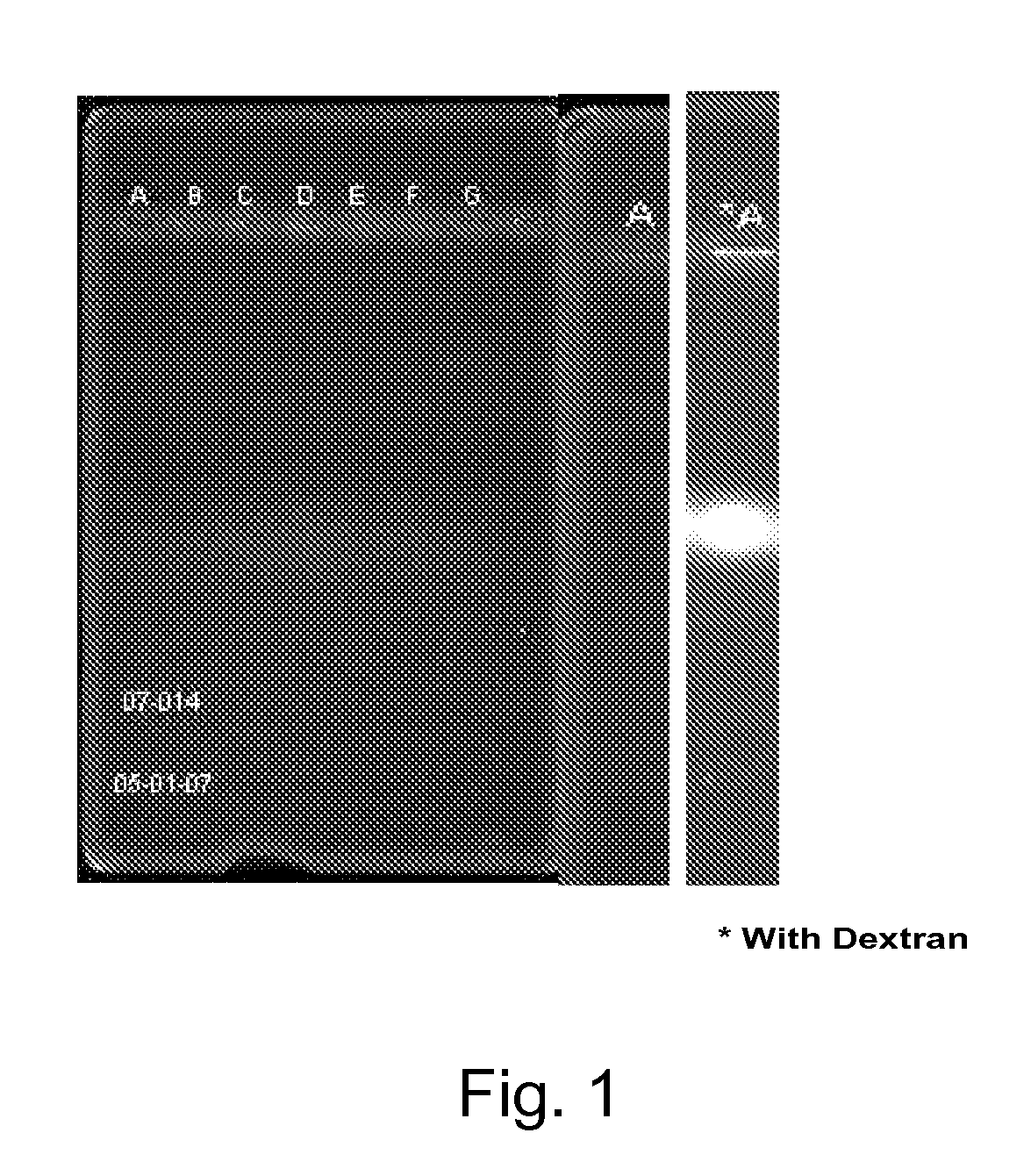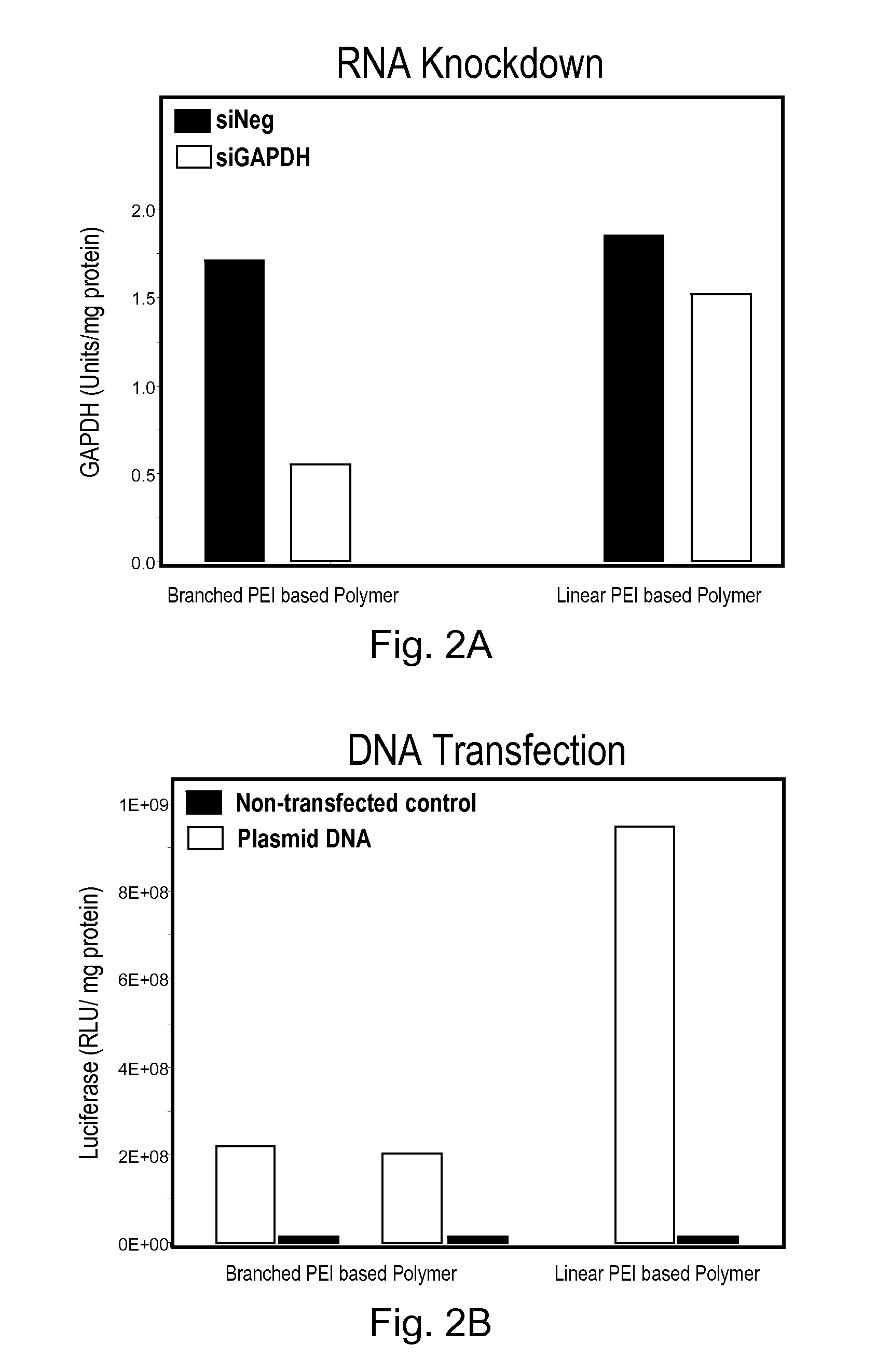Biodegradable Cross-Linked Branched Poly(Alkylene Imines)
a cross-linked, biodegradable technology, applied in the direction of viruses, drug compositions, sense disorders, etc., can solve the problems of limited clinical relevance of cationic lipid-based systems, polymers with high molecular weight are also more cytotoxic, and limit therapeutic applications, so as to achieve safe and efficient use, easy control of the effect of easy particle size and charge density
- Summary
- Abstract
- Description
- Claims
- Application Information
AI Technical Summary
Benefits of technology
Problems solved by technology
Method used
Image
Examples
example 1
Synthesis of Fluorescently Tagged Selectively Protected (Liss)BPEI1800D (BOC)20
[0110]2.4 g (1.33 mmol) of 1800 Da molecular weight BPEI (BPEI1800D) obtained from Polysciences, Inc., Warrington, Pa., USA, are dissolved in 20 ml of dry chloroform, and a solution of 65 mg (ca. 0.1 mmol) of lissamine sulfonylchloride in 10 ml of dry chloroform is added with stirring. The next day the red solution is concentrated under vacuum and the oily residue is taken in 25 ml of acetonitrile. 11 g (77.4 mmol) of ethyl trifluoroacetate and 700 mg (38 mmol) of water are then added to the reaction mixture. The reaction mixture is then stirred and refluxed overnight, and subsequently concentrated in vacuum.
[0111]The residue is dissolved in 50 ml of dry THF. 6.5 g (50 mmol) of diisopropylethylamine is added to the solution, followed by 9 g (41.2 mmol) of t-butoxycarbonyl (BOC) anhydride. The stirred reaction mixture is left overnight and then concentrated under vacuum. The viscous residue is dissolved i...
example 2
Synthesis of Selectively Protected BPEI1800D (BOC)20
[0112]
[0113]2.4 g (1.33 mmol) of BPEI1800D obtained from Polysciences, Inc., Warrington, Pa., USA, are dissolved in 25 ml of acetonitrile. 11 g (77.4 mmol) of ethyl trifluoroacetate and 700 mg (38 mmol) of water are then added to the reaction mixture. The reaction mixture is then stirred and refluxed overnight, and subsequently concentrated in vacuum. The residue is dissolved in 50 ml of dry THF. 6.5 g (50 mmol) of diisopropylethylamine is added to the solution, followed by 9 g (41.2 mmol) of t-butoxycarbonyl (BOC) anhydride. The stirred reaction mixture is left overnight and then concentrated under vacuum. The viscous residue is dissolved in 150 ml of MeOH; 80 ml of commercial 28% aq. NH3 solution is added and the stirred mixture is brought to gentle reflux. The next day the mixture is cooled, concentrated under vacuum, and the residue is partitioned between CH2Cl2 [150 ml] and brine [basified with aq. NH3 to pH 11]. The aqueous f...
example 3
Preparation of Biodegradable Lipid-Conjugated Cross-Linked BPEI1800D ipid Conjugate
[0114]
[0115]BPEI1800D (BOC)20 (1 g, 262 μMol) made above in Example 2 is dissolved in 3.5 ml CHCl3 and stirred. Oleoyl chloride (316 mg, 1.05 mMol) is added to the solution. After 1 hr, BOC anhydride (171 mg, 784 μmol) is added and the mixture is stirred. After 24 hours, the mixture is concentrated under vacuum, and the residue is triturated with hexane and dried under vacuum. The resulting foam is taken in 3 ml dry CHCl3, and a solution of dithiodipropionyl chloride (100 mg in 300 μl CHCl3, 1.5 eq. to BPEI) obtained from commercial dithiodipropionic acid and thionyl chloride is slowly added with stirring. Cross-linking is allowed to proceed for 48 hours, after which 4M HCl / dioxane (3 ml) is added to remove the BOC protection. After 1 hr the heterogeneous mixture is diluted with ether and centrifuged. The precipitate is 3× repeatedly re-suspended in fresh ether, re-centrifuged, and dried to afford the...
PUM
| Property | Measurement | Unit |
|---|---|---|
| average molecular weight | aaaaa | aaaaa |
| average molecular weight | aaaaa | aaaaa |
| molecular weight | aaaaa | aaaaa |
Abstract
Description
Claims
Application Information
 Login to View More
Login to View More - R&D
- Intellectual Property
- Life Sciences
- Materials
- Tech Scout
- Unparalleled Data Quality
- Higher Quality Content
- 60% Fewer Hallucinations
Browse by: Latest US Patents, China's latest patents, Technical Efficacy Thesaurus, Application Domain, Technology Topic, Popular Technical Reports.
© 2025 PatSnap. All rights reserved.Legal|Privacy policy|Modern Slavery Act Transparency Statement|Sitemap|About US| Contact US: help@patsnap.com



